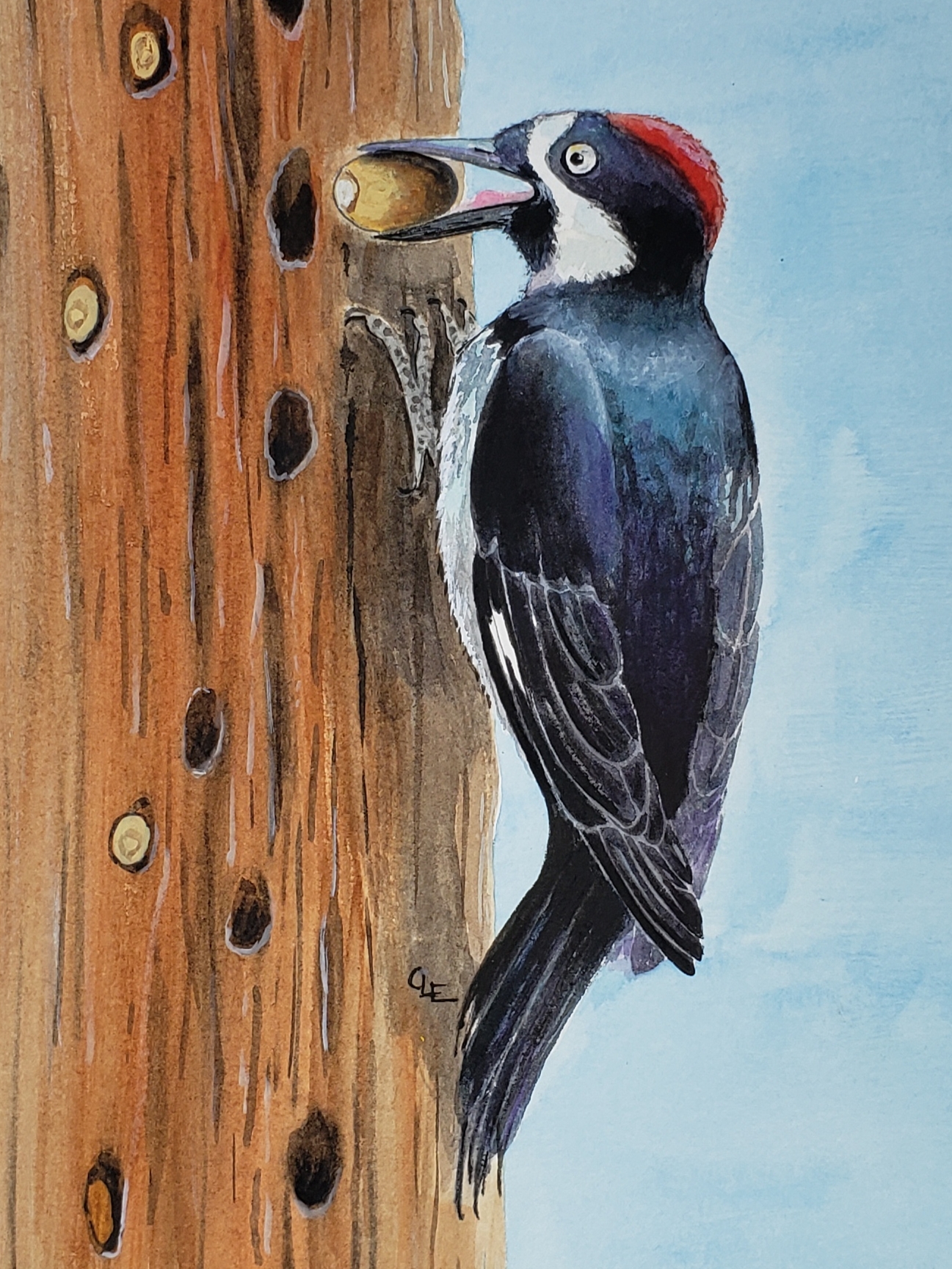
Young from a single brood have been found with multiple paternity.Īcorn hoarded by acorn woodpecker Food and feedingĪcorn woodpeckers, as their name implies, depend heavily on acorns for food. Once all the females start to lay, they stop removing eggs. A female usually destroys any eggs in the nest before she starts to lay. In groups with more than one breeding female, the females put their eggs into a single nest cavity. Inbreeding is rare, however, meaning that co-breeders of the opposite sex are almost never related. The males are often brothers, and the females are usually sisters. These breeding coalitions are typically closely related. Nesting groups can also contain up to ten offspring helpers. However, most nests are made up of only three males and two females. It is generally believed that limited territories drive cooperative breeding behavior in birds, and in the case of the acorn woodpecker, this limited territory is the acorn storage granary.īreeding coalitions consist of up to seven co-breeding males and up to three joint-nesting females. Additionally, adult offspring often stay in their parents' nest and help raise the next generation of woodpeckers. Coalitions of adult acorn woodpeckers nest together, localizing to storage granaries. Cooperative breeding occurs in two ways: coalitions and family groups. Cooperative breeding, defined as more than two birds taking care of nestlings in the nest, is a relatively rare evolutionary trait that is thought to occur in only nine percent of bird species.

Behaviour and ecology Breedingįield studies have shown that breeding groups range from monogamous pairs to breeding collectives, sometimes called "coalitions". Nests are excavated in a large cavity in a dead tree or a dead part of a tree. This species may occur at low elevations in the north of its range, but rarely below 1,000 m (3,300 ft) in Central America, and it breeds up to the timberline. The acorn woodpecker's habitat is forested areas with oaks in the coastal areas and foothills of Oregon, California, and the southwestern United States, south through Central America to Colombia. Acorn woodpeckers have a call that sounds almost like they are laughing. White circles on their wings are visible when in flight. When flying, they take a few flaps of their wings and drop a foot or so. The white neck, throat, and forehead patches are distinctive identifiers. The adult male has a red cap starting at the forehead, whereas females have a black area between the forehead and the cap. There is a small part on the small of their backs where there are some green feathers. The adult acorn woodpecker has a brownish-black head, back, wings and tail, white forehead, throat, belly and rump. striatipectus Ridgway, 1874 – Nicaragua to west Panama lineatus (Dickey & Van Rossem, 1927) – Chiapas (south Mexico) to north Nicaragua albeolus Todd, 1910 – east Chiapas (southeast Mexico) to Belize and northeast Guatemala formicivorus ( Swainson, 1827) – southwest USA to southeast Mexico angustifrons Baird, SF, 1870 – south Baja California (Mexico)

bairdi Ridgway, 1881 – Oregon (USA) to north Baja California (Mexico) The oldest known Red-bellied Woodpecker was a male in Georgia, and at least 12 years, 3 months old when he was identified in the wild by his band.Scientists categorize this odd behavior as a type of play that probably helps young birds practice the evasive action they may one day need. You may occasionally see a Red-bellied Woodpecker flying quickly and erratically through the forest, abruptly changing direction, alighting for an instant and immediately taking off again, keeping up a quick chatter of calls.As many as half of all Red-bellied Woodpecker nests in some areas get invaded by starlings. But more often they’re victims to the aggressive European Starling. Red-bellied Woodpeckers have been known to take over the nests of other birds, including the much smaller (and endangered) Red-cockaded Woodpecker. For birds that nest in cavities, nest holes are precious turf.They also use cracks in trees and fence posts to store food for later in the year, a habit it shares with other woodpeckers in its genus. You may sometimes see Red-bellied Woodpeckers wedge large nuts into bark crevices, then whack them into manageable pieces using their beaks.Males have longer, wider-tipped tongues than females, possibly allowing a breeding pair to forage in slightly different places on their territory and maximize their use of available food. The tip is barbed and the bird’s spit is sticky, making it easier to snatch prey from deep crevices. A Red-bellied Woodpecker can stick out its tongue nearly 2 inches past the end of its beak.


 0 kommentar(er)
0 kommentar(er)
